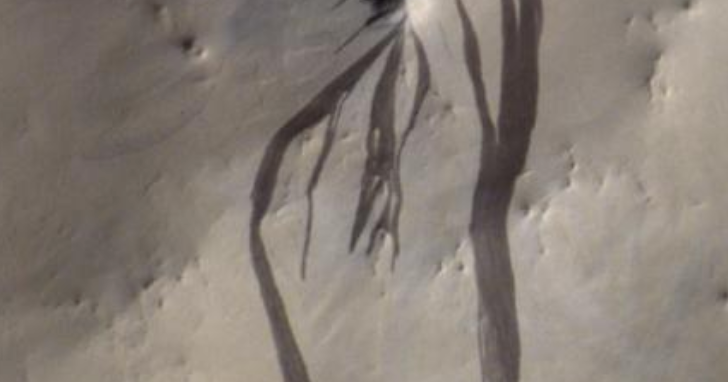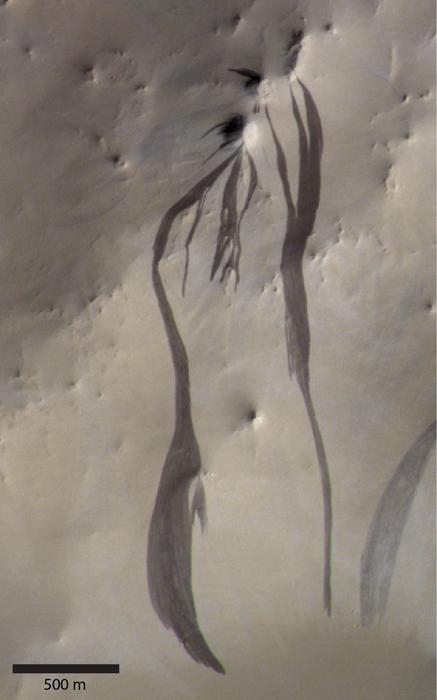A new study casts doubt on a phenomenon that was previously believed to show water flowing on the surface of Mars.
Since the 1970s, scientists have studied dark streaks seen on Mars’ cliff sides and crater walls. The streaks tend to be hundreds of meters long. Some can last for a long time, while others are more short-lived. Those more short-lived slope streaks, called recurring slope lineae, or RSLS, tend to recur in the same areas from year to year, according to a news release announcing the study.
Some scientists believe the streaks are proof of flowing water on the planet and could suggest the Red Planet is home to habitable environments. Others believe the streaks are caused by dry processes, like rock falls or wind gusts, and said the streaks only appear like liquid remnants because scientists are studying orbital images.
Adomas Valantinas, a postdoctoral researcher at Brown University, and Valentin Bickel, a researcher at Switzerland’s University of Bern, used machine learning to study the streaks. The process cataloged more than 86,00 high-resolution satellite images of the slope streaks and RSLs. That created a first-of-its-kind global Martian map showing more than half a million such features.
NASA
“Once we had this global map, we could compare it to databases and catalogs of other things like temperature, wind speed, hydration, rock slide activity and other factors.” Bickel said. “Then we could look for correlations over hundreds of thousands of cases to better understand the conditions under which these features form.”
The analysis, published in Nature on Monday, found that the slope streaks were not “generally associated with factors that suggest a liquid or frost origin,” according to the news release. Such factors would include a specific orientation of slopes, high humidity or surface temperature fluctuations.
What the study did find was that the slopes were more likely to form in places that had above-average wind speeds and dust deposition, likely pointing to a dry origin. The slope streaks were more often found near recent-impact craters and could be caused when shockwaves shake surface dust. RSLs are more common in areas with frequent rockfalls or dust devils.
“Our study reviewed these features but found no evidence of water. Our model favors dry formation processes,” Valantinas said.
The results of the study cast doubt on claims that slope streaks could be signs of habitable regions. That means that researchers could send rovers or other spacecraft to explore the areas without contaminating the sites.
“That’s the advantage of this big data approach,” Valantinas said. “It helps us to rule out some hypotheses from orbit before we send spacecraft to explore.”


